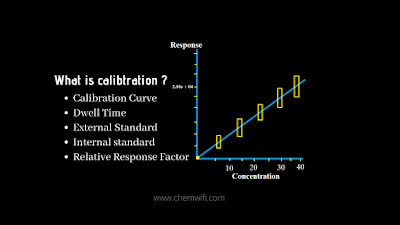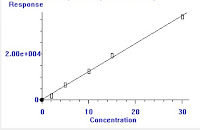What is Calibration?
Calibration
Calibration is the Process of defining instrument response to a known amount of a particular compound. The resulting calibration curve is used to quantile amount of that compound in a sample of unknown concentration.
The instrument response measured for chromatographic data is integrated peak height or area. Mixtures of non-interfering compound can be used to define the define the response of many compound in a single calibration; retention times and response factors for the compounds are then placed in a calibration table.
Calibration Curve
A calibration curve is a graph of the concentration and response data obtained from one or more calibration samples. The curve shows how a gives compound responds in area count to varying Concentration under the same instrument conditions and in the presence of constant concentration of an internal standard (if present).
To provide reliable result, a calibration curve should have at least two levels that bracket the amount expected to be found in the unknow samples.
Dwell Time
Dwell time is the product of sample number and integration time. To increase signal a fixed integration time of 235 µs is used for SIM data in Acquisition and the tune file value set for Integr is ignored. Thus, SIM abundances and saturation level may differ from those of Scan mode or profile scans in Tune. The amount of the difference will roughly depend on the ratio of the tune file integration time to the SIM integration time of 235 µs.
External Standard
The external standard calibration procedure requires that both calibration and unknown samples be analyzed under the same conditions. The quantitative results are obtained by comparing the data for the unknown to that for the calibration samples.
Internal standard
ISTD Internal standard – a compound added to every standard, blank, matrix spike, matrix spike duplicate, and unknown sample prior to analysis. The internal standard is added at an exact, known concentration. It is required for the calculation of relative response factors for target compounds.
The internal standard should be similar to the target compound, both chemically and in retention time. But it must be distinguishable either by retention time or by ions.
Relative Response Factor
Relative response factor is a dimensionless quantity that measures the response of a target compound relative to that of an internal standard:
RF = (target area x ISTD amount) / (ISTD area x target amount)


